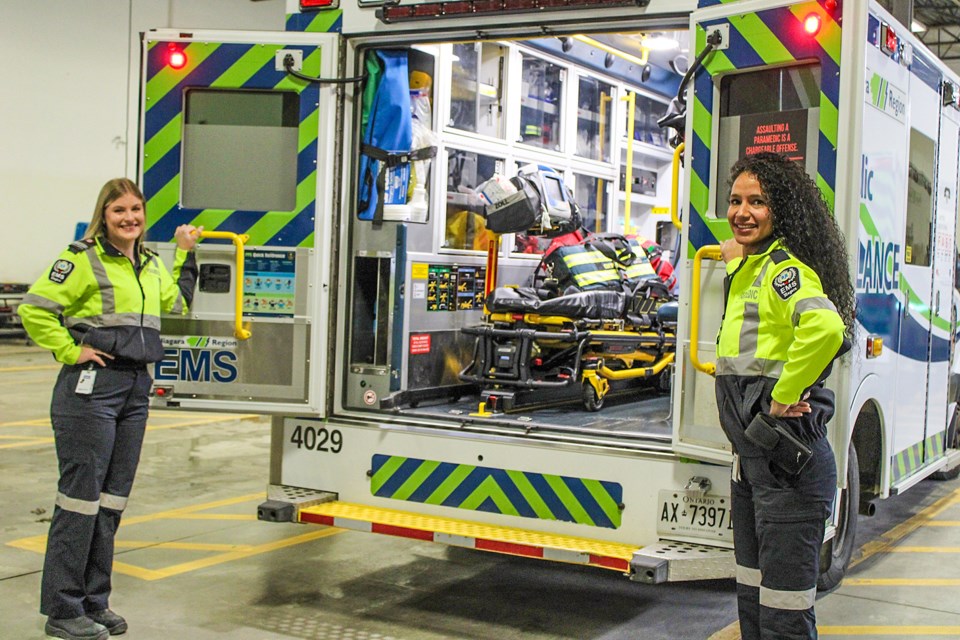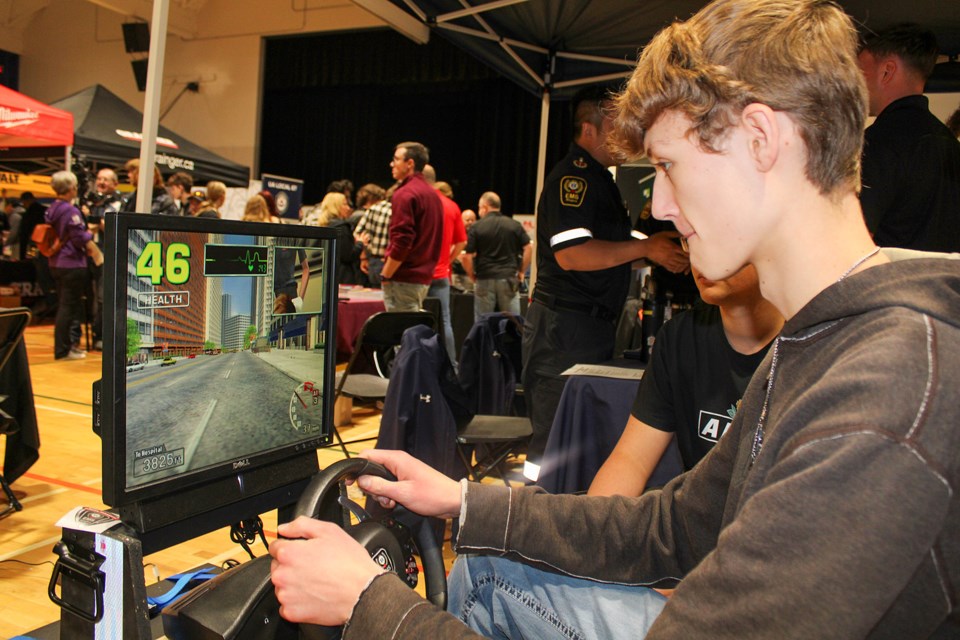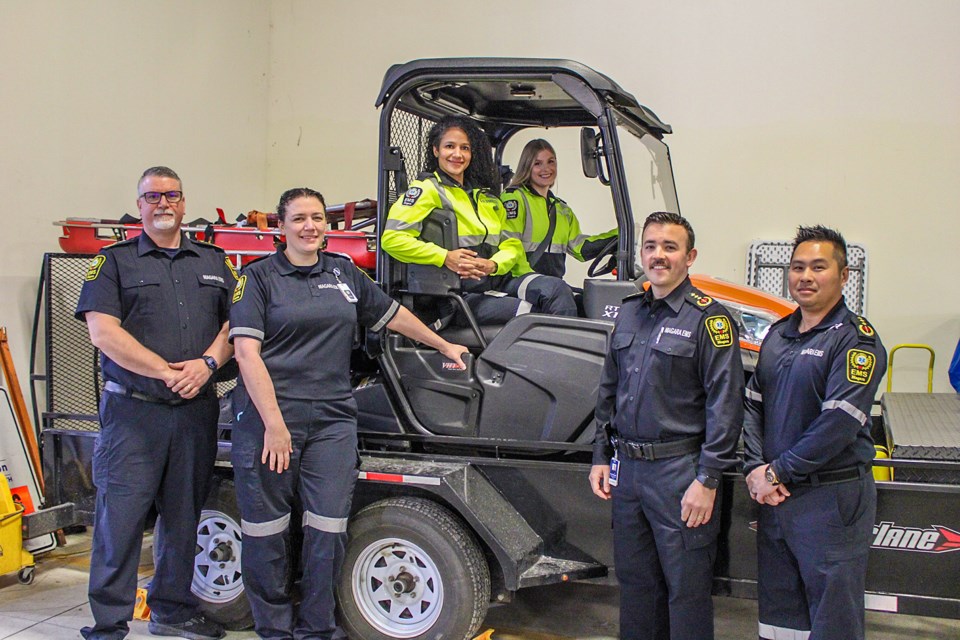It took some time, but Vanessa Smith was able to scratch that itch was calling her to become a paramedic. Smith had been working in dental administration and decided to quit a job she’d held for 10 years and go back to school.
“I felt like there was nothing more to learn [in dental administration], so as soon as my kids were a decent age and all in school full time, I decided to go back into the field that I wanted to do,” Smith said.
After graduating from the Ontario College of Health and Technology’s paramedic program in 2019, Smith took a job as a primary care paramedic with Niagara Emergency Medical Services (EMS) and has not looked back.
Being a paramedic is a job that is not without its challenges, Smith said.
“Nobody calls 911 for anything fun. The challenges are not knowing what you’re going into,” Smith said. “Whereas with other careers, you get up, you go about your day, you know what you’re getting yourself into.”
And while the job may be difficult, Smith said she is prepared for whatever may come her way.
“The training we go through here is huge, so once we get in and we see what we’re dealing with, we feel well-equipped.”
Abbey Serafini, meanwhile, has been a paramedic for only six months and like Smith, being a paramedic was not what she intended when she first left high school to get her post-secondary education.
“I knew I didn’t want a desk job,” she said. “I knew I needed something different. I knew I just needed something where I was involved with people.”
And despite the challenge of meeting people under trying circumstances, being a paramedic also has its rewards, Serafini said.
“When you think about it, I’m going to go in and do what I can to try to make this a better day for somebody. It kind of changes the perspective.”

Kate Boothman, training operations superintendent, said that as is the case with all new recruits, Smith and Serafini went through a multi-step process before they donned the dark blue uniform of Niagara EMS.
All available positions are posted online, and applicants must pass a written test for their application to be considered, Boothman said.
“And if you’re successful at that stage, there is a physical testing component,” Boothman said. “We bring people in for scenario testing and one of the things that I find is unique to Niagara, is that we also want to make sure that we have people who are strong and compassionate, so that they’ll be a good fit to our team.”
Scenarios may involve anything from cardiac events that lead to a cardiac arrest, to trauma calls. Other scenarios may test how a candidate interacts with others, Boothman added.
“We also we try to make them come out of their comfort zone. We might create some conflict in the room, to see what their reaction is and how they try to manage it.”
Following the tests, candidates are then interviewed by a panel of EMS staff before a final selection is made.
Robert Law is deputy chief, systems performance, for Niagara EMS. He said the service is expanding its recruiting efforts to high school kids who are thinking about what they want to do once they leave school.
“If this wasn’t your choice as a career and you came into it late, that’s kind of what we’re looking to fix,” he said. “If we would have captured Abbey when she was in high school to get her thinking about that job.”

There are other jobs at Niagara EMS as well, including 911 dispatchers and mechanics to help keep the ambulances and other vehicles on the road.
The outreach includes setting up booths at events in the community as well as taking part of in school events such as E.L. Crossley Secondary School’s Trade and Techfest, where Joe Tran, operations superintendent, promotion and recruitment, spoke with students about the service last November.
“We recognize the need to start at a grassroots level, Tran said. “We recently did a presentation at St. Catharines Collegiate that just showcased our service as a whole, not just paramedicine, but our dispatch program. We filled them in about the job, specifically to paramedics, but all the other jobs that are here.”
When people think of the service, they think about only the ambulance – and the paramedics who have come to help them. There’s more to it, however, Tran said.
“We have wonderful fleet staff that are here, that help keep the trucks running every day. We have emergency call nurses that have emergency room experience, dispatching local calls, providing other services beyond just a paramedic responding.”
Those additional services include EMS’ Mobile Integrated Health Teams and occupational therapists that attend calls.
“We have psychological nurses with us,” Tran said.
Law said that the idea is for EMS to meet the need of the call with a response that is appropriate to the situation.
“When a person calls 911, one of our [operators or dispatchers] will go ahead and take that call, and we’ll either go through dispatching an emergency ambulance, or it may be moved over to emergency communications nurses who may have an alternate response, and that could be something as simple as following up with your family doctor and giving health advice,” he said.
Law said that while answering 911 calls results in a reactionary response, EMS also has proactive procedures in place.
“We have occupational therapists that go into homes with our falls intervention team,” Law said. “There may be a call for patients who’ve had a fall, but if they’re uninjured, maybe all they need is help getting up. But while they’re in their home, the occupational therapist can also do a risk assessment to see if there are other things to prevent that next fall or injury, which then becomes a 911 call, which becomes a transport to [the emergency department], so it affects the whole system.”

Currently, Niagara EMS ranks include 285 primary care and 118 advanced care paramedics—the difference between the two levels of paramedic determine procedures they are qualified to perform. Advanced care paramedics, for instance, can intubate patients to keep their airway open while primary care paramedics cannot.
In the case of combative patients, advanced care paramedics can administer midazolam to calm them while primary care paramedics can only physically restrain patients.
Niagara Region, Law said, has authorized the service to hire 16 full-time paramedics in 2025.
In terms of equipment, the service has 52 ambulances in its fleet with 38 in service 24 hours a day, seven days a week. Other equipment, including a Kubota ATV, help get paramedics into places regular vehicles can’t go.
The service also has partnerships with Niagara Health, which provides a mental health nurse who attends some EMS calls as well as Niagara Regional Police and various fire departments “to develop plans to make sure we’re going to the appropriate responses,” Law said.
